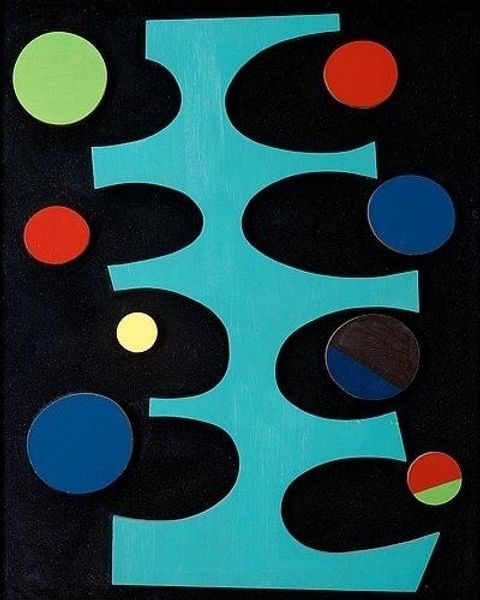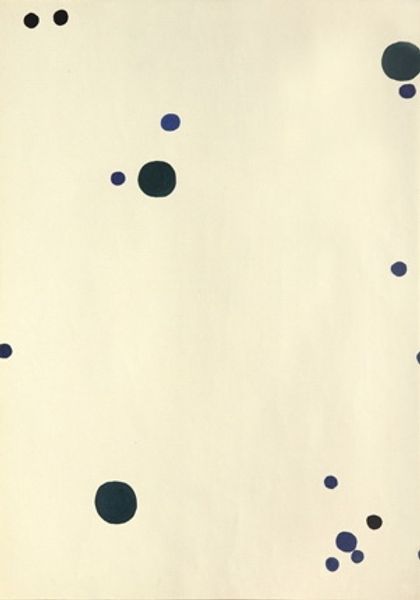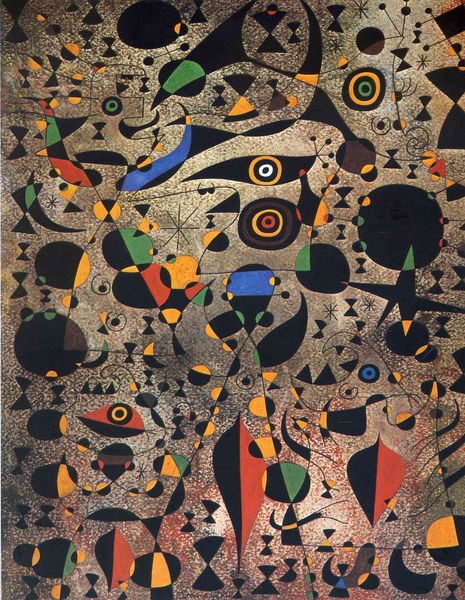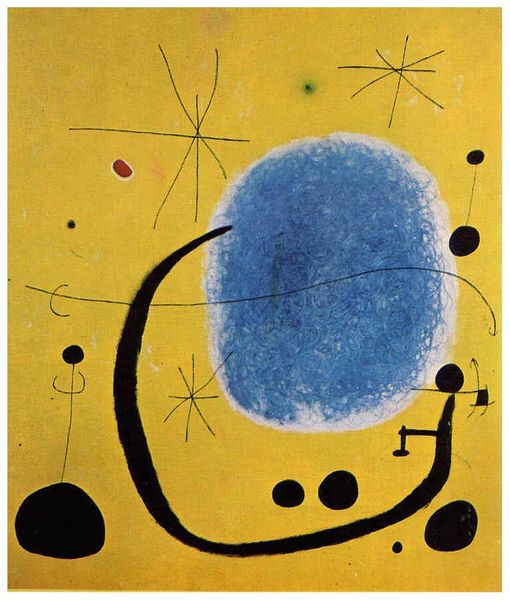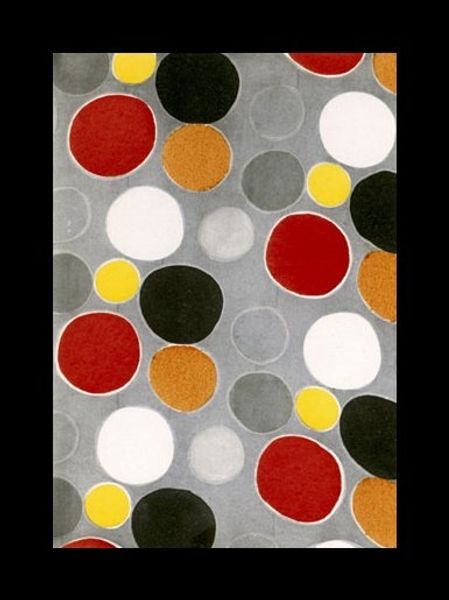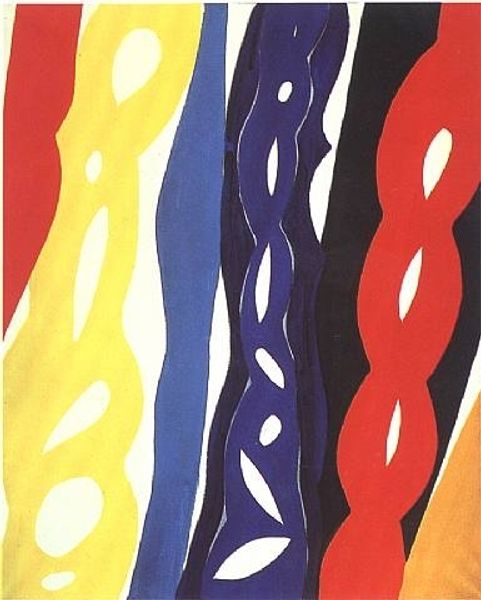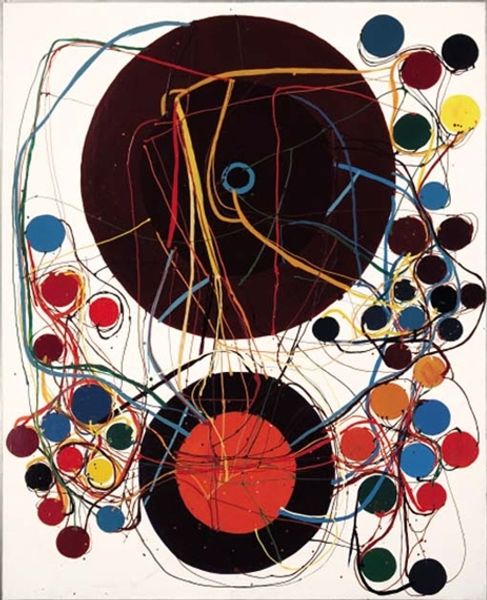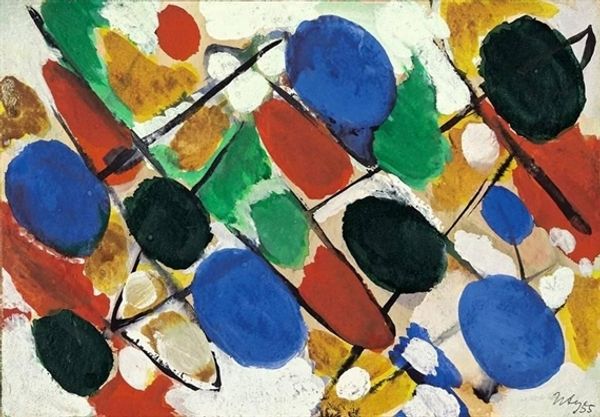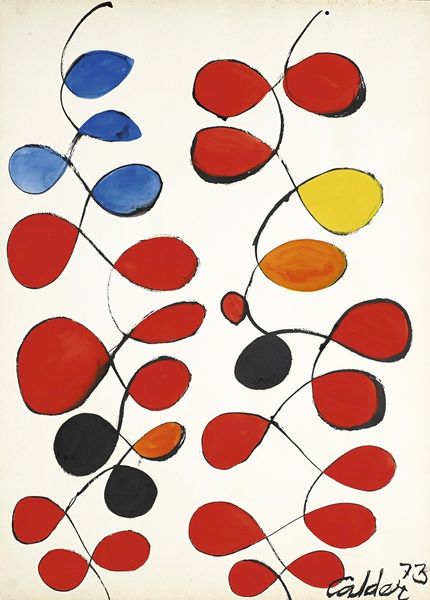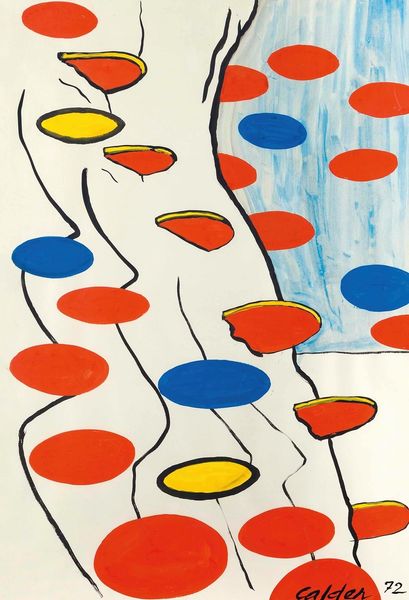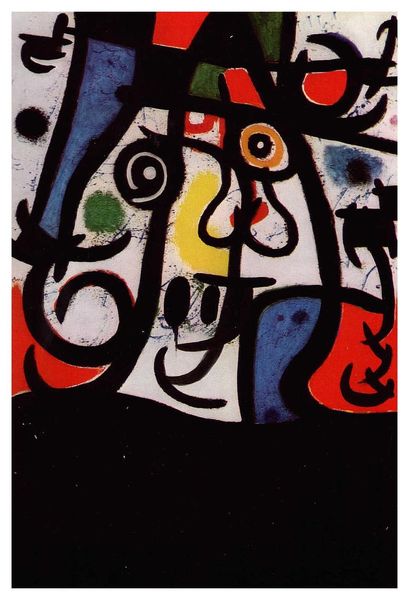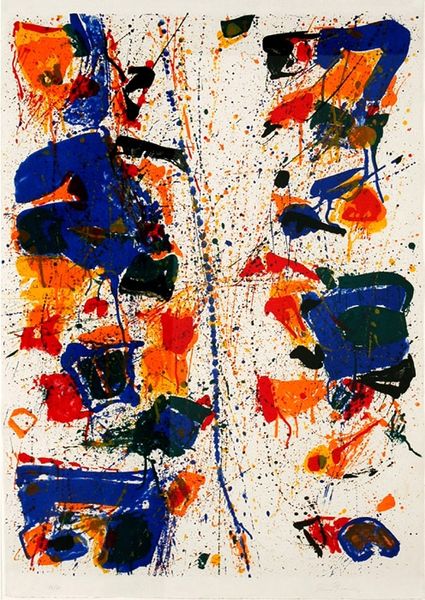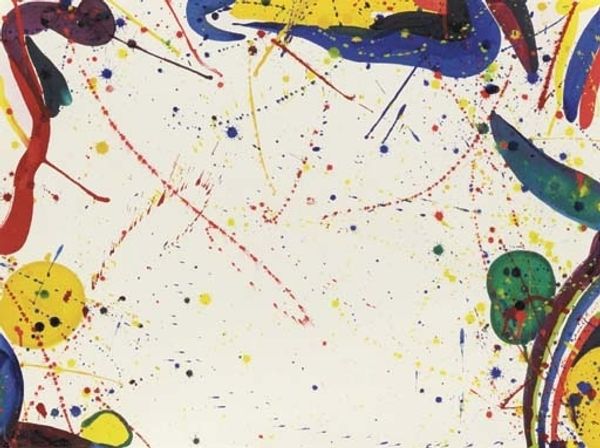
painting, acrylic-paint
#
abstract-expressionism
#
organic
#
painting
#
pattern
#
acrylic-paint
#
abstract pattern
#
organic pattern
#
geometric
#
abstraction
#
surrealism
Copyright: Joan Miro,Fair Use
Editor: Here we have Joan Miró’s, "The Song of the Vowels", from 1967, created using acrylic paint. I'm really drawn to the sense of boundless space within a relatively narrow canvas. How do you interpret this work, especially considering the title? Curator: It's a great observation about the compressed space. The title itself suggests an exploration of language and communication beyond traditional forms. Miró was working during a period of intense socio-political upheaval; the late 60s. Given this context, might these seemingly abstract shapes and colours represent a breakdown of traditional power structures, a kind of visual poetry dismantling established norms? Editor: That’s interesting! I hadn't considered it in terms of social breakdown, but I can see that now. I was thinking more about how the colors evoke a childlike freedom and simplicity. Curator: Precisely! That ‘childlike’ quality is deliberate. Miró, like many artists of his time, sought to tap into a more primal, intuitive form of expression. He was actively pushing against the established art world, but also perhaps more broadly, against societal expectations around expression and communication. Do you think that by naming it after 'vowels' specifically, he was pointing towards fundamental building blocks? Editor: Yes, I think so. The most basic elements. So perhaps, this piece is less about pure abstraction and more about a symbolic return to a purer form of expression. It's a dismantling, like you said, but also a rebuilding. Curator: Exactly. Considering the historical and political landscape of the time, viewing art as activism allows us to really reflect on the dismantling of artistic norms in the expression and the role of an artist’s responsibility. Editor: I will definitely be keeping that in mind from now on. It adds so much more depth. Thanks for opening my eyes.
Comments
No comments
Be the first to comment and join the conversation on the ultimate creative platform.
